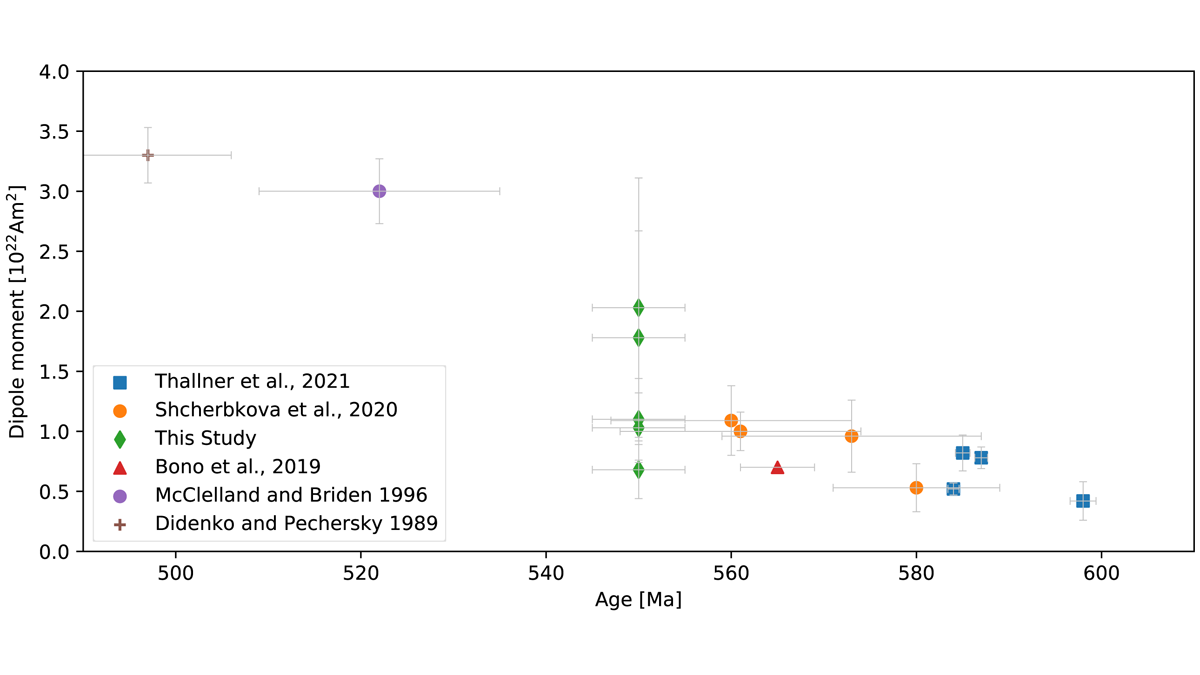Editors’ Highlights are summaries of recent papers by AGU’s journal editors.
Source: Journal of Geophysical Research: Solid Earth
Paleogeographic reconstructions during the Ediacaran period (685-539 million years ago) are plagued with ambiguity, often related to a postulated instable configuration of the geomagnetic field at those times. Support for this is found in recent ultra-low paleointensity determinations from the Ediacaran that yield intensities typical of the field strength during polarity transitions of the modern field.
Ediacaran paleointensities have a corresponding dipole moment (with the samples’ inclination the determined intensity can be recalculated to the moment of an imaginary dipole field) that ranges between 0.5*1022 and 1.0*1022 Am2, which is about 10 percent of the moment of today’s stable field (~8.2*1022 Am2). By using a combination of methods to determine the paleointensity, Thallner et al. [2021] report a notably higher but a still low dipole moment of ~2.0*1022 Am2 from the Skinner Cove Formation (Newfoundland, eastern Canada) with an age of 550 Ma, i.e. latest Ediacaran, that heralds the change-over to a stable dipolar field in the Cambrian and later.
The authors discuss a perceived inconsistency with magnetostratigraphic information that indicates a continued ‘hyper-active’ field (i.e., a frequently reversing field) from the Ediacaran into the mid-Cambrian. However, the reversal frequency in the Cambrian is poorly constrained hampering robust conclusions. Thus, the question whether or not there would be distinct phases in the inner-core-growth regime can only be answered with an improved magnetostratigraphic record and an increased number of paleointensity data, as underscored in this study.
Citation: Thallner, D., Biggin, A. J., McCausland, P. J. A., & Fu, R. R. [2021]. New paleointensities from the Skinner Cove Formation, Newfoundland, suggest a changing state of the geomagnetic field at the Ediacaran-Cambrian transition. Journal of Geophysical Research: Solid Earth, 126, e2021JB022292. https://doi.org/10.1029/2021JB022292
—Mark J. Dekkers, Associate Editor, JGR: Solid Earth

